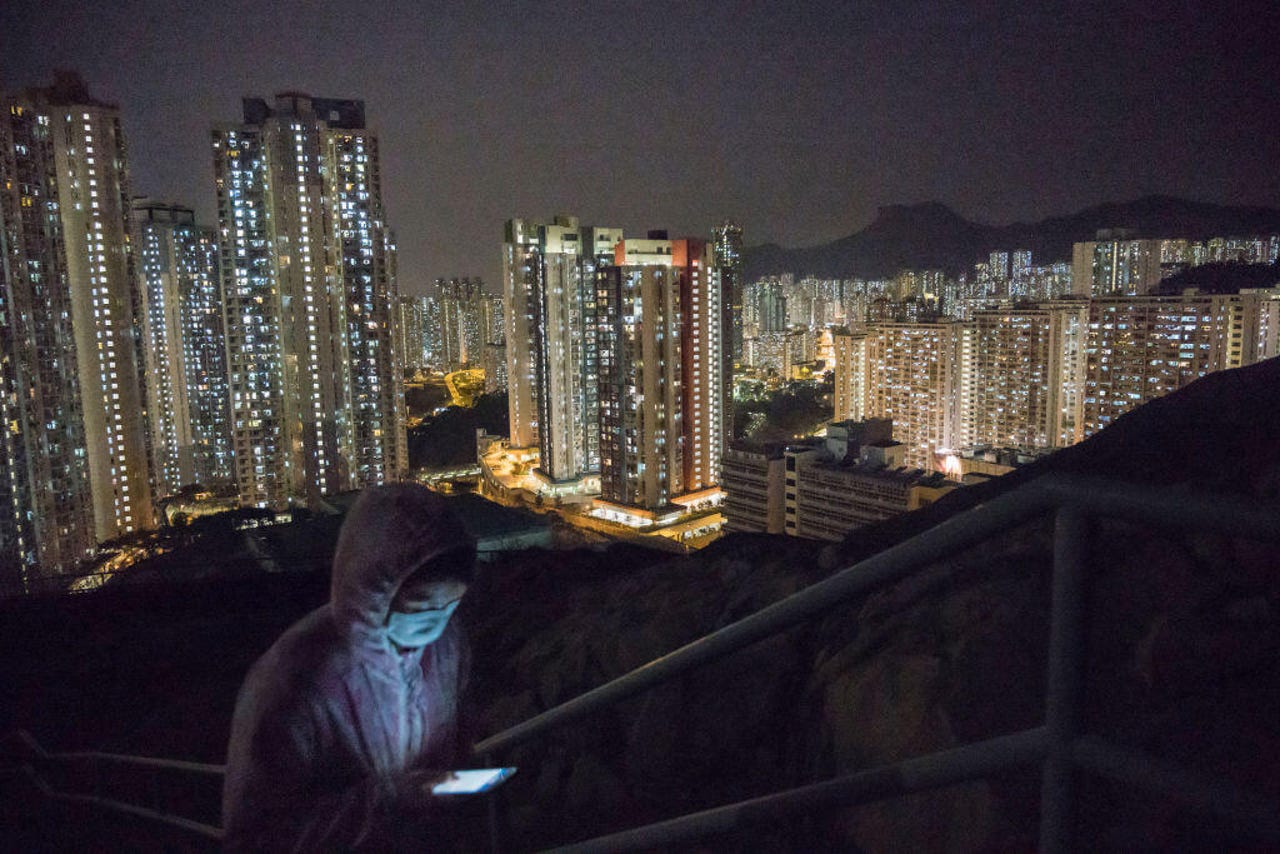































 Image: Getty Images
Image: Getty Images There are two areas when rolling out broadband that present issues: The most remote and the most dense areas.
For the remote areas, the argument is based purely on economics, but for built-up areas where it makes absolute economic sense, other issues come to the fore.
In the case of Australia, the national broadband wholesaler is busy ensuring that 75% of its fixed-line footprint is capable of hitting 1Gbps by 2023.
The gaping hole in this plan are those living in apartments, who are unlucky enough to not have a fibre or cable connection and instead have to make do on twisted pair.
Unlike many places in North America, Australia had the briefest flirtation with cable rollouts in the 1990s, which means that even with fairly modern apartment blocks, there is no guarantee anything other than twisted pair will be installed from the fibre connection in the comms room to your unit.
NBN CEO Stephen Rue told ZDNet last year when the upgrade plans were announced that the company was looking at "ways that all our networks can have greater capability". A year on, the company must still be looking because as it soldiers on upgrading houses, standalone businesses, and single-dwelling premises, apartment dwellers are being left behind.
It is into this void, Australia's telcos have entered, none more so than TPG Telecom, which has actively tried to get users interested in 12Mbps connections onto its LTE fixed wireless. The company recently said it saw its number of users on the service triple in the first six months of the year.
Speaking last week, CEO I?aki Berroeta was buoyant about the telco's prospects in replicating its success on 5G fixed wireless.
"5G technology is enabling us to deliver much faster speeds on our new 5G home internet service than similarly priced NBN50 and NBN100 plans," he said.
"Consumers have different speed usage and budget requirements for their home broadband service, and we're giving them choice."
Given NBN has less than 8% of its users on plans over 100Mbps, and the majority on 50Mbps, the addressable market is certainly there.
Upgrading apartment blocks can be a tough problem to solve at the best of times. When an owners' groups can struggle to agree on fixing and paying for waterproofing, and are thoroughly disturbed by the idea of laundry being visible from the street, raising the idea of retrofitting a piece of fibre up the inside of a building, or heaven forbid the outside, seems like a bridge too far -- it's much easier to fire electromagnetic waves into the building instead.
This also works for the telcos because they can mount microcells on street lights to boost capacity and coverage when needed, and while guaranteeing to stick around 100Mbps on LTE could be touch and go, doing so on 5G is much less of a regulatory risk.
Under its Vodafone moniker, TPG is offering a AU$75 plan capped at 100Mbps, and another for AU$10 a month more removes the speed cap. That's all well and good, but the real ace up its sleeve could be its AU$85 a month all-you-can-eat-mobile plan.
It is currently unknown at what sort of usage limit TPG will start to apply its fair use policies on the plan, but it looks extremely tempting if you can get a Vodafone 5G signal to drop the existing fixed connection, hotspot the phone, and go for broke. Vodafone has said there is a 30GB tethering quota on the plan, but unless it is doing active traffic sniffing and monitoring or assuming everyone is still on tethering-locked iPhones from last decade, the question of detecting tethering by users is unanswered.
In the wake of Vodafone's recent announcement, the Australian Communications Consumer Action Network (ACCAN) slightly shifted its position on whether 5G is a substitute for fixed wireless.
"For some households, a 5G home internet plan may better suit their needs than an NBN connection -- for example if they move quite frequently, or there's only one or two people in the household. However, for households that have multiple people trying to use the internet at once for things like streaming video, using video conferencing, and playing video games online, they will still likely be better serviced by an NBN connection," ACCAN deputy CEO Andrew Williams said.
"We also believe that at AU$85 per month, Vodafone's plan may be too expensive for many households, especially those on low incomes, to consider making the switch."
Not for the last time, if a trend is to take off, it will first be seen when trendy inner city types take it up.
The Monday Morning Opener is our opening salvo for the week in tech. Since we run a global site, this editorial publishes on Monday at 8:00am AEST in Sydney, Australia, which is 6:00pm Eastern Time on Sunday in the US. A member writes it of ZDNet's global editorial board, which is comprised of our lead editors across Asia, Australia, Europe, and North America.
 Tags chauds:
technologie
Téléphones intelligents
Tags chauds:
technologie
Téléphones intelligents